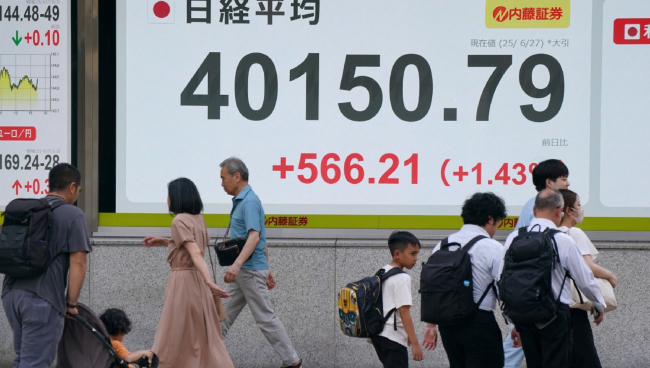United States Imposes Tariffs on Asian Nations, China Negotiations Continue
The United States, under President Donald Trump’s administration, announced new tariffs on selected Asian countries on Friday. While some nations breathed a sigh of relief with the tariffs being lower than initially threatened and delayed by a week, others are still eager to negotiate lower rates.
Trump postponed the tariffs until August 7, and the rates for some countries were lower than initially feared. Yet, uncertainty lingers over ‘transshipments’ and tariffs on Japanese cars.
Thailand’s ‘Major Success’
Thailand and Cambodia, who recently witnessed border clashes that claimed over 40 lives, received a 19% levy, an improvement from the previously threatened 36%. Thailand hailed this as a “major success,” citing it as a “win-win approach aimed at preserving Thailand’s export base and long-term economic stability.” Thailand’s exports to the US, namely machinery, vehicles, and auto components, are crucial for its economic growth.
Cambodia’s ‘Best News’
Cambodian Prime Minister Hun Manet welcomed the news as “the best for the people and economy of Cambodia to continue to develop the country.” Originally, Cambodia was looking at a 40% tariff. Neighboring Vietnam had reached an agreement with Washington in early July, securing a 20% tariff.
The Perils of Transshipments
However, the US is also set to impose a 40% surcharge on goods that pass through third countries — known as transshipments — en route to the US. This could significantly impact Southeast Asian nations, whose supply chains are tightly connected to China. Many Cambodian factories, for instance, are Chinese-owned, and the White House has accused Cambodia of allowing Chinese goods to bypass higher tariffs onto US markets. The definition of “transshipment” goods remains unclear, leaving ASEAN economies in limbo.
Taiwan’s ‘Temporary’ Relief
Taiwan, a major player in the semiconductor industry, was initially threatened with a 32% tariff on its exports. However, the announced rate is 20%, with negotiations ongoing. Taiwanese President Lai Ching-te called this “temporary” and hopes for further reductions. The soaring demand for AI chips in Taiwan has driven its trade surplus with the US, a trend that Trump’s tariff blitz aims to curtail.
Japan’s Car Confusion
Japan agreed on a 15% tariff last week, down from the threatened 25%, effective from August 7. Nevertheless, Japan’s auto exports already face a 25% rate, prompting Tokyo to call for its swift reduction. Additionally, Trump’s claim that Japan will invest $550 billion in the US, recouping 90% of profits, has caused confusion.
While the latest tariff developments affect various Asian economies, negotiations with China, the largest trading partner of the US, continue, with a deadline set for August 12.
AFP
